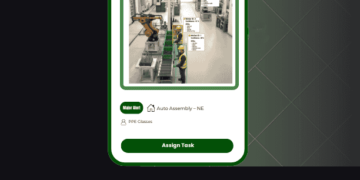In modern construction, especially in foundation and marine projects, speed and precision are vital. One powerful tool that has revolutionized pile driving is the vibratory hammer for excavator. When mounted properly, this attachment transforms an ordinary excavator into a high-efficiency pile-driving machine. Whether you’re new to this equipment or looking to optimize its use, this step-by-step guide will walk you through how to use a vibratory hammer for excavator safely and effectively.
What is a Vibratory Hammer for Excavator?
A vibratory hammer is a specialized attachment used to drive or extract piles into the ground using rapid vertical vibrations. These hammers are commonly mounted on excavators to take advantage of their hydraulic power and mobility.
This configuration allows contractors to work in tight areas, over water, or on uneven terrain where traditional pile-driving rigs would be less efficient or impossible to use. The vibratory hammer for excavator is especially useful for installing sheet piles, H-beams, and casings.
Benefits of Using a Vibratory Hammer for Excavator
Before diving into the “how,” it’s worth noting why contractors are switching to vibratory hammers:
- Increased productivity: Drives piles faster than traditional drop hammers.
- Greater precision: Easier to position and adjust using the excavator’s arm.
- Versatility: Works on different types of piles and terrains.
- Cost efficiency: Saves labor and reduces the need for additional equipment.
Step-by-Step Guide to Using a Vibratory Hammer for Excavator
Step 1: Select the Right Vibratory Hammer Attachment
Not all vibratory hammers are created equal. Choosing the correct model depends on:
- Pile type and size (steel, concrete, wood)
- Soil conditions (soft clay, sand, hard rock)
- Excavator hydraulic capacity (flow rate and pressure)
Consult the manufacturer’s compatibility chart or speak with a dealer to ensure a proper match.
Step 2: Attach the Vibratory Hammer to the Excavator
- Ensure the excavator is on level ground and powered off.
- Connect the quick coupler or manual pins to the hammer’s mounting bracket.
- Attach hydraulic lines securely. Check that the pressure and flow meet the hammer’s specifications.
- Double-check all connections for leaks or loose fittings.
Pro Tip: Use protective sleeves for hydraulic hoses to prevent damage during operation.
Step 3: Perform Pre-Operation Checks
Before operation, conduct the following checks:
- Inspect the hammer for wear, cracks, or loose bolts.
- Test hydraulic flow to make sure pressure is stable.
- Ensure safety features (emergency shutoff, pressure relief) are functioning.
Document these checks daily for safety compliance.
Step 4: Position the Pile
Use the excavator to lift and position the pile vertically. Depending on the hammer model, it may include a clamp or pile guide to grip the pile securely.
- Line up the pile using the excavator’s precision.
- Clamp the hammer onto the top of the pile ensuring it is straight.
Proper alignment ensures smooth driving and prevents bending or misplacement.
Step 5: Activate the Vibratory Hammer
Once the pile is positioned:
- Engage the hydraulic flow to start the vibrations.
- Apply downward pressure using the excavator arm.
- Monitor penetration rate. Adjust pressure or speed as necessary.
Important: Do not force the pile if resistance is too high. Stop and evaluate soil conditions.
Step 6: Monitor Progress and Make Adjustments
- Watch for pile deflection or drift.
- Check for unusual vibrations or noises.
- Pause periodically to inspect the hydraulic system and the hammer.
Operators should be trained to feel the machine’s feedback and respond accordingly.
Step 7: Finish Driving and Disengage
Once the desired depth or resistance is achieved:
- Turn off the vibrations.
- Release the clamp or pile holder.
- Retract the hammer safely.
Document the pile location, depth, and any anomalies for the project record.
Step 8: Post-Operation Maintenance
After daily use, follow these maintenance steps:
- Clean the hammer and inspect for wear or damage.
- Check hydraulic lines for leaks or kinks.
- Lubricate moving parts if specified by the manufacturer.
- Store the attachment in a dry, secure area.
Routine maintenance extends the lifespan of your vibratory hammer and minimizes downtime.
Safety Tips When Using a Vibratory Hammer for Excavator
- Always wear proper PPE (helmet, gloves, steel-toe boots).
- Only trained operators should handle vibratory equipment.
- Maintain clear communication between crew members.
- Keep bystanders clear of the operating zone.
- Shut down immediately if any malfunction occurs.
Common Mistakes to Avoid
- Using the wrong hammer for your excavator size
- Over-driving piles and damaging the structure
- Neglecting to pre-check hydraulic system health
- Driving at an angle, leading to misaligned piles
- Operating without full visibility of the pile location
Avoiding these errors improves safety and ensures the job gets done right the first time.
Conclusion
Mastering the vibratory hammer for excavator can significantly improve your efficiency in pile-driving operations. By following the correct steps — from attachment and positioning to driving and maintenance — you can ensure a smooth, safe, and cost-effective operation. Whether you’re driving sheet piles along a riverbank or installing foundations in an urban zone, this versatile tool gives your excavator the power and precision to handle the job.



















